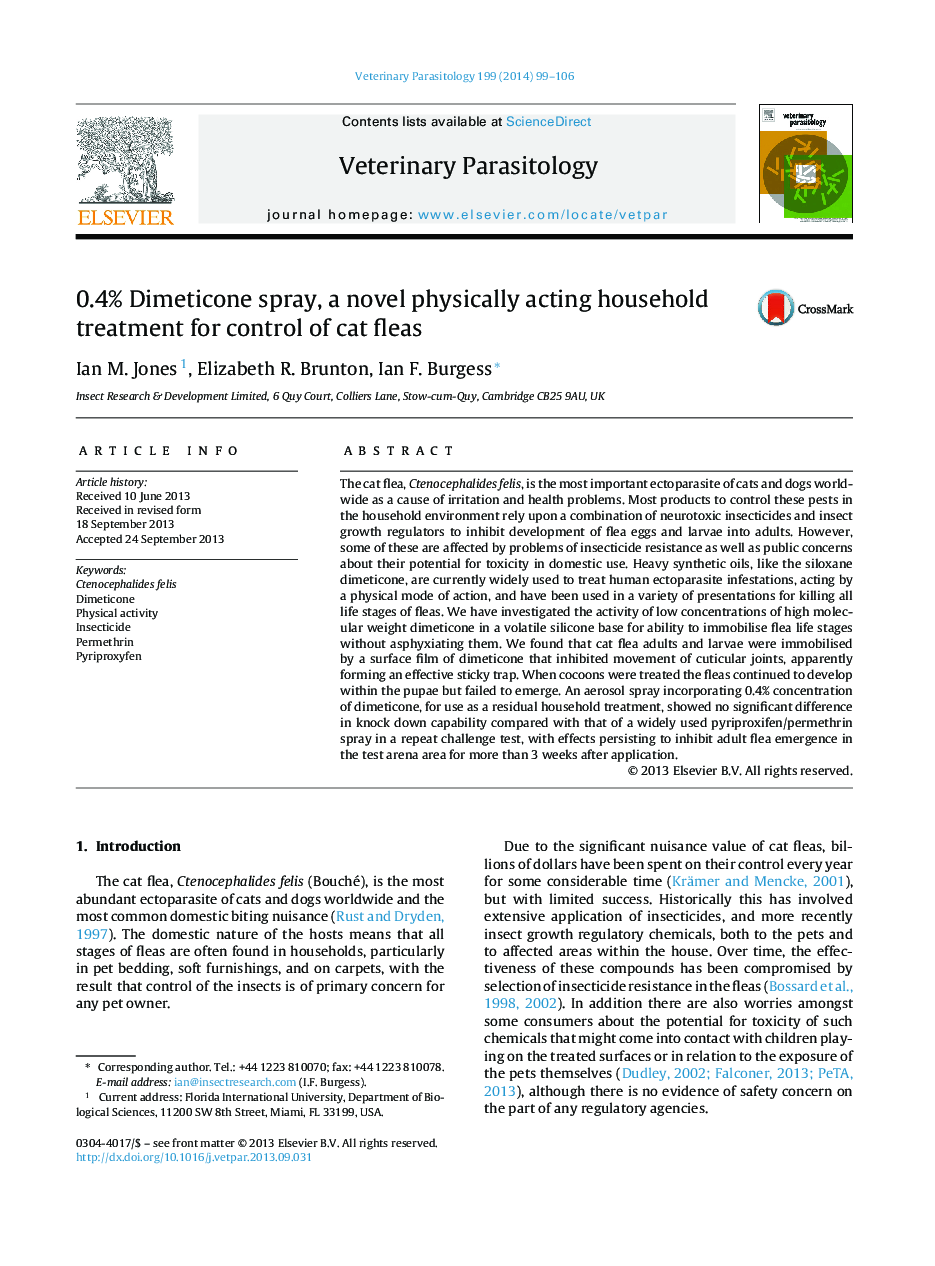| کد مقاله | کد نشریه | سال انتشار | مقاله انگلیسی | نسخه تمام متن |
|---|---|---|---|---|
| 5803456 | 1555693 | 2014 | 8 صفحه PDF | دانلود رایگان |

The cat flea, Ctenocephalides felis, is the most important ectoparasite of cats and dogs worldwide as a cause of irritation and health problems. Most products to control these pests in the household environment rely upon a combination of neurotoxic insecticides and insect growth regulators to inhibit development of flea eggs and larvae into adults. However, some of these are affected by problems of insecticide resistance as well as public concerns about their potential for toxicity in domestic use. Heavy synthetic oils, like the siloxane dimeticone, are currently widely used to treat human ectoparasite infestations, acting by a physical mode of action, and have been used in a variety of presentations for killing all life stages of fleas. We have investigated the activity of low concentrations of high molecular weight dimeticone in a volatile silicone base for ability to immobilise flea life stages without asphyxiating them. We found that cat flea adults and larvae were immobilised by a surface film of dimeticone that inhibited movement of cuticular joints, apparently forming an effective sticky trap. When cocoons were treated the fleas continued to develop within the pupae but failed to emerge. An aerosol spray incorporating 0.4% concentration of dimeticone, for use as a residual household treatment, showed no significant difference in knock down capability compared with that of a widely used pyriproxifen/permethrin spray in a repeat challenge test, with effects persisting to inhibit adult flea emergence in the test arena area for more than 3 weeks after application.
Journal: Veterinary Parasitology - Volume 199, Issues 1â2, 17 January 2014, Pages 99-106